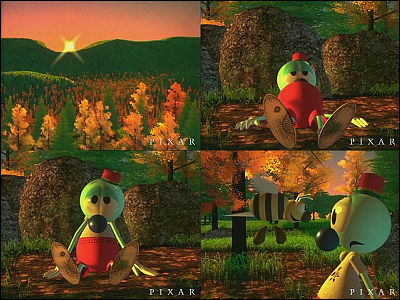The fonts used in the Pixar film 'Wall-E' reveal hidden design details and historical background

A variety of fonts appear in the 2008 Pixar 3D CG movie '
WALL·E | Typeset In The Future
https://typesetinthefuture.com/2018/12/04/walle/

The setting of WALL-E is an Earth that has been completely polluted by humans, and the spaceship Axiom, where humans have left Earth to live. WALL-E, the protagonist, works as a garbage disposal robot on Earth, and chases after EVE, a robot from Axiom, leaving Earth to go on an adventure in space.
WALL-E/Trailer | Disney Plus - YouTube
The name of the main character, Wally, is 'WALL·E'. The symbol used in the name is not a '-' (hyphen) or a '・' (middle dot), but a '·' (punctuation mark). Wally's name is written on the plate on the front of the device as follows:

This punctuation mark was originally used in Latin and Ancient Greek to separate words. Centuries after this punctuation mark was introduced, the space was invented. Punctuation marks are still in use at the time of writing, and are used to represent the official decimal point in British currency and the dot product of two vectors in mathematics. In Japan, punctuation marks are also used to separate job titles and names, according to Typeset In The Future. (Example: Assistant Manager Suzuki)
Typeset In The Future points out that WALL-E’s official name is “Waste Allocation Load Lifter·Earth Class (WALL·E),” so the use of punctuation to separate the WALL and the E is perfect.
The font used for the 'WALL·E' on WALL·E's front plate is '
Below is Gunship in lowercase (top) and uppercase (bottom).

In addition to WALL-E's front plate, the Gunship is also used on signs and buildings inside the Axiom, a spaceship owned by the large corporation 'BNL' that appears in the film.
The BNL logo is an overly italicized version of Futura Extra Bold Oblique , which was apparently chosen by the film's opening credits, due to the distinctive capital G in the BNL 'BUY N LARGE BANK' logo.
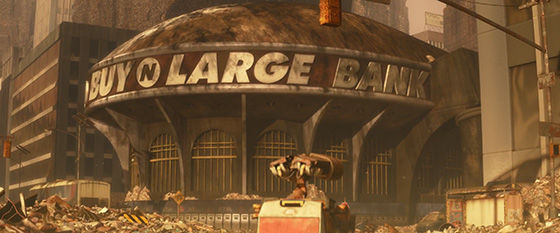
Below is Futura Extra Bold Oblique.

Some companies have also used Futura Extra Bold Oblique to create their corporate logos, such as Costco Wholesale, which uses a red and blue color scheme to mimic the Costco logo.

In the film, a dilapidated sign for 'Eggman Movers,' a subsidiary of BNL, can be seen.

Eggman Movers is an Easter egg created by Ralph Eggleston , the production designer for Wall-E, and is named after the moving company that appears in the 1995 film 'Toy Story.'

Since BNL runs a bank, there are also bills issued by BNL. BNL's bills are all very high denominations such as '$10 million' and '$99 million'. The reason for the '$99 million' bill is that BNL continues to use the psychological trick of classic pricing , and the half-baked '$99 million' bill is prepared so that you don't have to take the trouble to get change when purchasing such things. Regarding this, Typeset In The Future wrote, 'This is a good representation of BNL's approach to consumerism.'
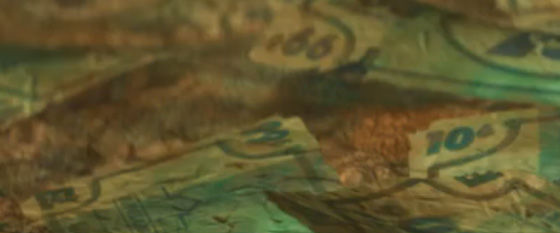
In the real world, hyperinflation can make a single bill very expensive. Wally was released in the United States in June 2008, but a few months later, in November 2008, inflation in Zimbabwe caused the dollar to trade at 2,621,984,228 Zimbabwean dollars per dollar. Since then, the Reserve Bank of Zimbabwe has issued 100 trillion dollar bills, meaning that bills worth more than Wally's world actually existed.
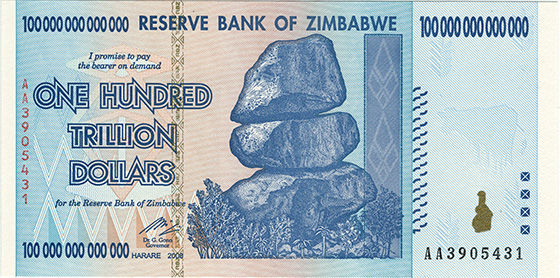
In the world of WALL-E, there is also a monorail operated by BNL. The monorail that appears in the world of WALL-E is a type of monorail called ALWEG , which was popularized by Swedish entrepreneur Axel Wenner-Gren , and is closely associated with Disney, the parent company of Pixar.

Walt Disney, the founder of Disney, actually saw the prototype of the ALWEG monorail, and opened a monorail at Disneyland in California, USA in June 1959. Since then, monorails have been operated at Disneylands around the world, and Tokyo Disneyland also has a monorail called the Disney Resort Line .
[Official] Departure towards your dreams | Disney Resort Line - YouTube
It is unclear where on Earth Wall-E lived, but there is a monorail in Wall-E's area, and a disk-shaped building like the one shown below can be seen nearby.

'It is strongly reminiscent of

Near the monorail, you will find a sign that reads 'Wally: Working to dig you out!' Regarding this poster, Typeset In The Future wrote, 'The poster clearly has nuances of communist propaganda, depicting a stylized army of Wallys working together to build a brighter future. The point that communist values are the solution to decades of consumerism is a pretty bold political statement, as it is shown by just four minutes into the film.'

This is a style of expression known as
Propaganda posters created by the Chinese Communist Party

Communist propaganda poster created by the Soviet Union

It is also used in propaganda posters created by North Korea.

The phrase was also used in a promotional poster for the banned comedy film ' The Interview ' in 2014, which is about a visit to North Korea to interview the country's leader, Kim Jong Un.
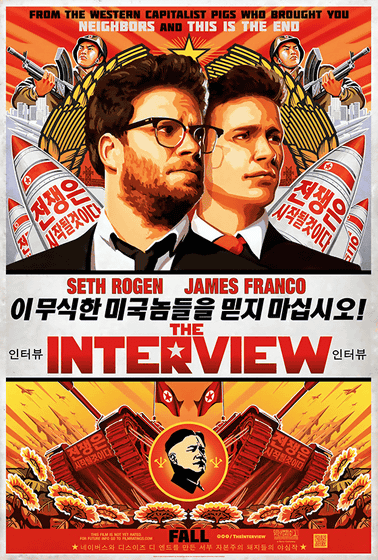
The font used in Wally's propaganda posters is ' Handel Gothic ', created by Donald J. Handel in 1965.

Handel Gothic is used in many other places too.

Handel Gothic is also used in the logo of EPCOT Center at Walt Disney World in Florida, which opened in 1982.

Additionally, Typeset In The Future examines the various designs and historical background of the fonts featured in the film WALL-E.
In addition to WALL-E, Typeset In The Future has also examined various science fiction works based on fonts, and has published a book compiling these studies.
Typography and Design in Science Fiction Movies | Dave Addy, Naoko Shinogi | Books | Online Shopping | Amazon

In addition, the Blu-ray version of Wally is sold at Amazon.co.jp for 4,980 yen including tax.
Amazon.co.jp: WALL-E [Blu-ray] : Disney: DVD

Related Posts:

